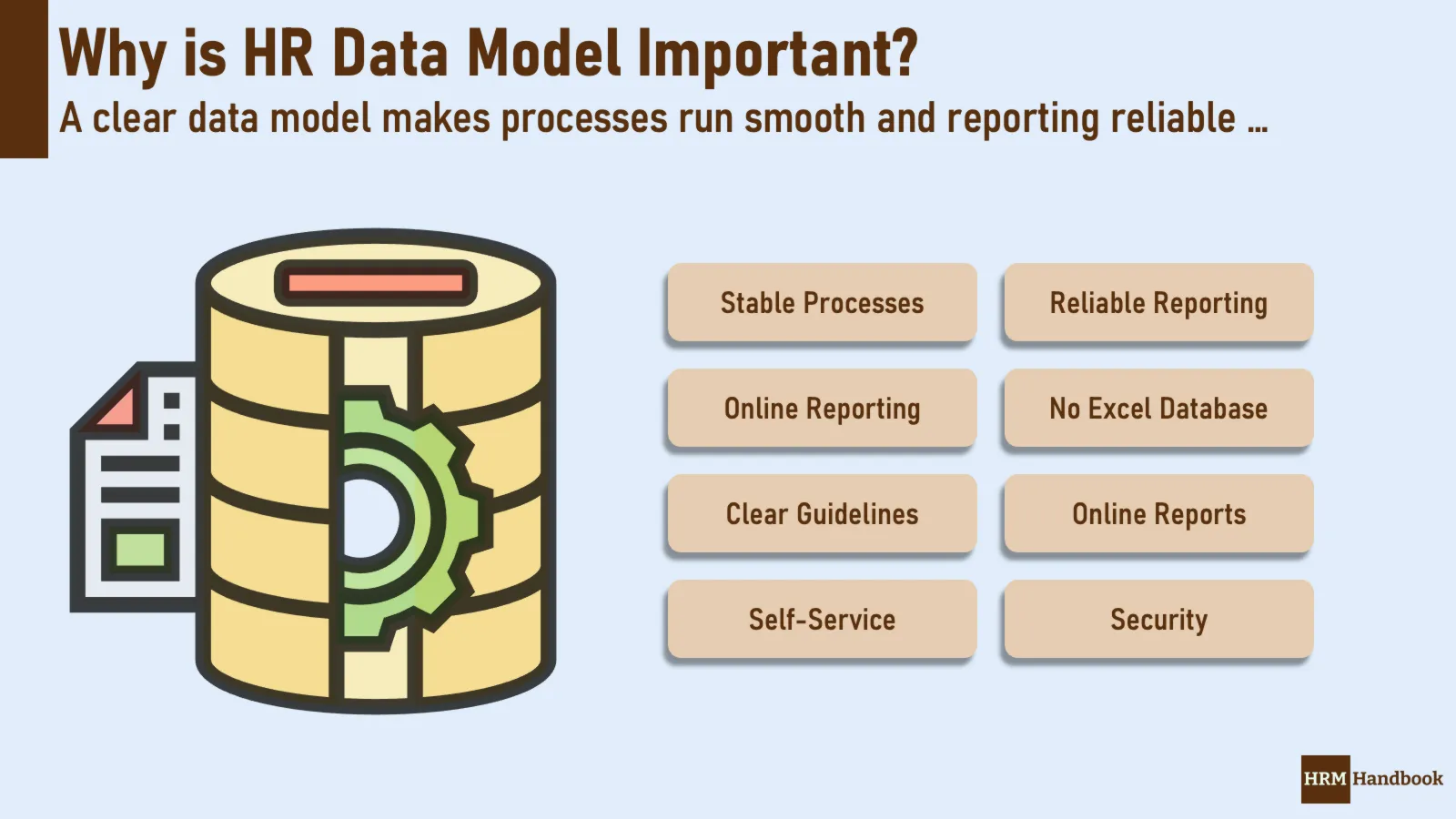HR Data Model
Today, all critical business decisions are made using many data and information. The first question of each leader is to see any hard facts and evidence that support a tough decision. They do not decide using just a gut feeling; they want to see the proposed approach is right.
The same principle applies to the HR Management. Most Human Resources Departments collect massive amounts of data about employees and job applicants. However, it usually does not dig important pieces of information from available data. HR Data are typically a mess. The HR leader needs to find the strategic answer, and it is the HR Data Model.
The HR Data Model is a must for the modern people management function in the business. It describes clearly data available in Human Resources, how data are collected, processed, interfaced and deleted. It also grants access to HR data. It clearly name the primary source of data for other systems and connects HR with other business functions through different data interfaces.
It sounds familiar however we usually store sensitive data in Microsoft Excel sheets and no one updates them regularly. The HR network drive is usually full of important files with a lot of sensitive data, and there is no clear structure. Human Resources still lives in the unstructured world. We have to compete with our internal chaos, and we lose our focus on delivery of results because we cannot trust our data.

Human Resources needs to drive the performance of employees. It needs accurate data to identify weak spots in the organisation. It needs to introduce the HR predictive analytics to answer strategic questions before they are asked by other managers and leaders. The HR Data Model helps to switch Human Resources Organisation from the reactive one to the proactive one.
HR Data Model
Moreover, Human Resources needs to drive its productivity and reliability. It needs to describe clearly its data and introduce the rigour in the HR Data Management. It needs to implement the HR Data Model that describes all details about available data and names employees responsible for changes and updates. We usually introduce strict rules for changes in the personal and payroll data but we do not follow the same principles in other areas.
The HR Data Model is clearly linked with HR Roles and Responsibilities and HR Model as such. We usually forget to include data creation and data management into our job profiles. However, each HR Centre of Excellence Manager has to be entirely responsible for the data management in his or her area of responsibility.
They must become a member of the team that delivers a new data model for Human Resources. They have to identify key data created, maintained and required by their processes. They have to develop a solution that does not include any Microsoft Excel sheets.
The introduction of the HR Big Data solutions makes the importance of the HR Data Model a top priority. These solutions usually do not employ any complex HRMS today. These solutions are based on several highly interconnected and interfaced applications that share the same set of HR data.
Without the model in place, they cannot support Human Resources at their best. The predictive analytics tools do not produce reliable results because they can be based on wrong data. Moreover, having wrong inputs always stops the leadership team in the decision-making process.
I is a terrible task that is not visible to the rest of the organisation. However, it is a job that enables Human Resources to increase the performance and productivity in the future. Each HR leader has to put the model on her agenda to deliver promises in the future. It does not require massive investments; it just requires time and patience.